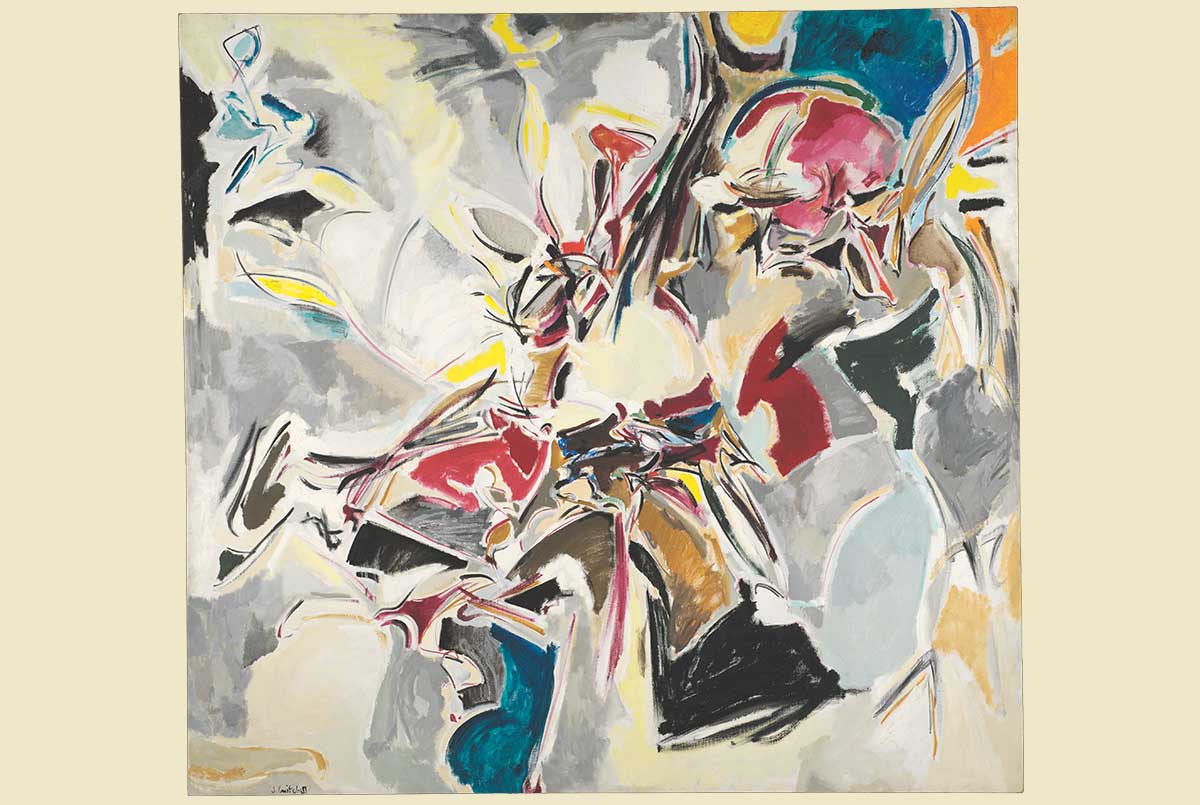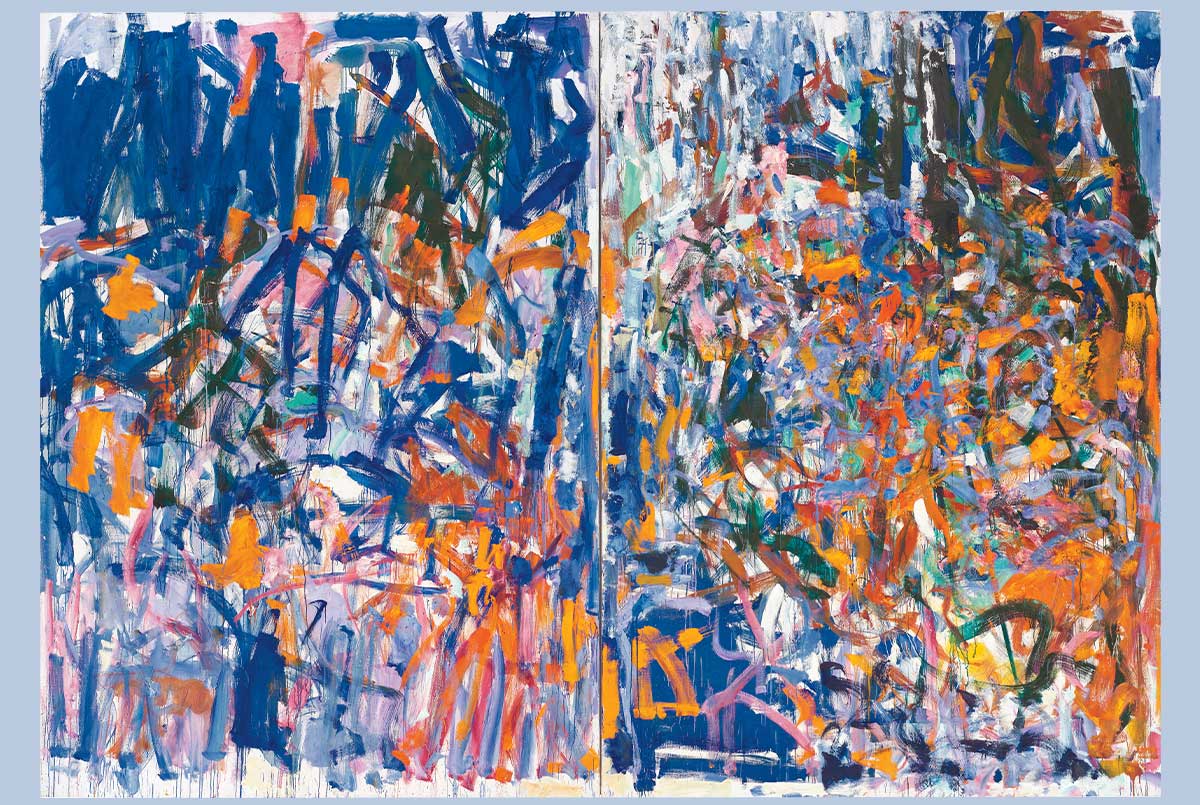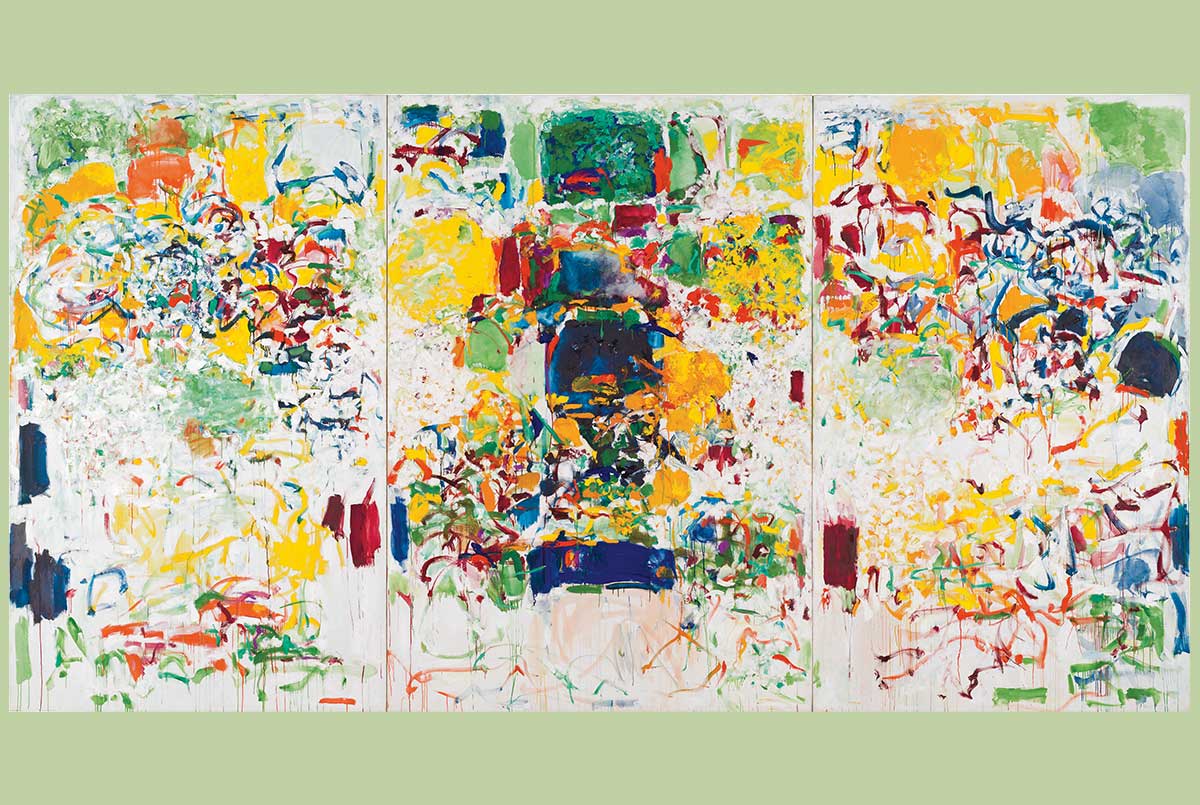Mitchell also found inspiration in the natural world. In 1959, the artist immigrated to France. And then in 1968, she moved to a property in a small village near Paris. The landscapes at this estate inspired some of Mitchell’s most important works, including her 1969 Sans Neige (Triptych), above.
The artist paints the triptych, an artwork on three panels, using many different types of marks. Some are loose and gestural; some are dense and aggressive with texture. Although the scene is abstract, there is a suggestion of space and depth, and the vibrant colors evoke a garden rich with flowers.
French Impressionist Claude Monet, celebrated for his landscapes, once lived in a cottage on the property where Mitchell lived almost 90 years later. Like Monet, Mitchell experimented with color and light to represent the gardens. But she was more interested in conveying what she felt than what she saw when observing the surrounding landscape. “I paint from remembered landscapes that I carry with me—and remembered feelings of them, which of course become transformed,” Mitchell explains.




